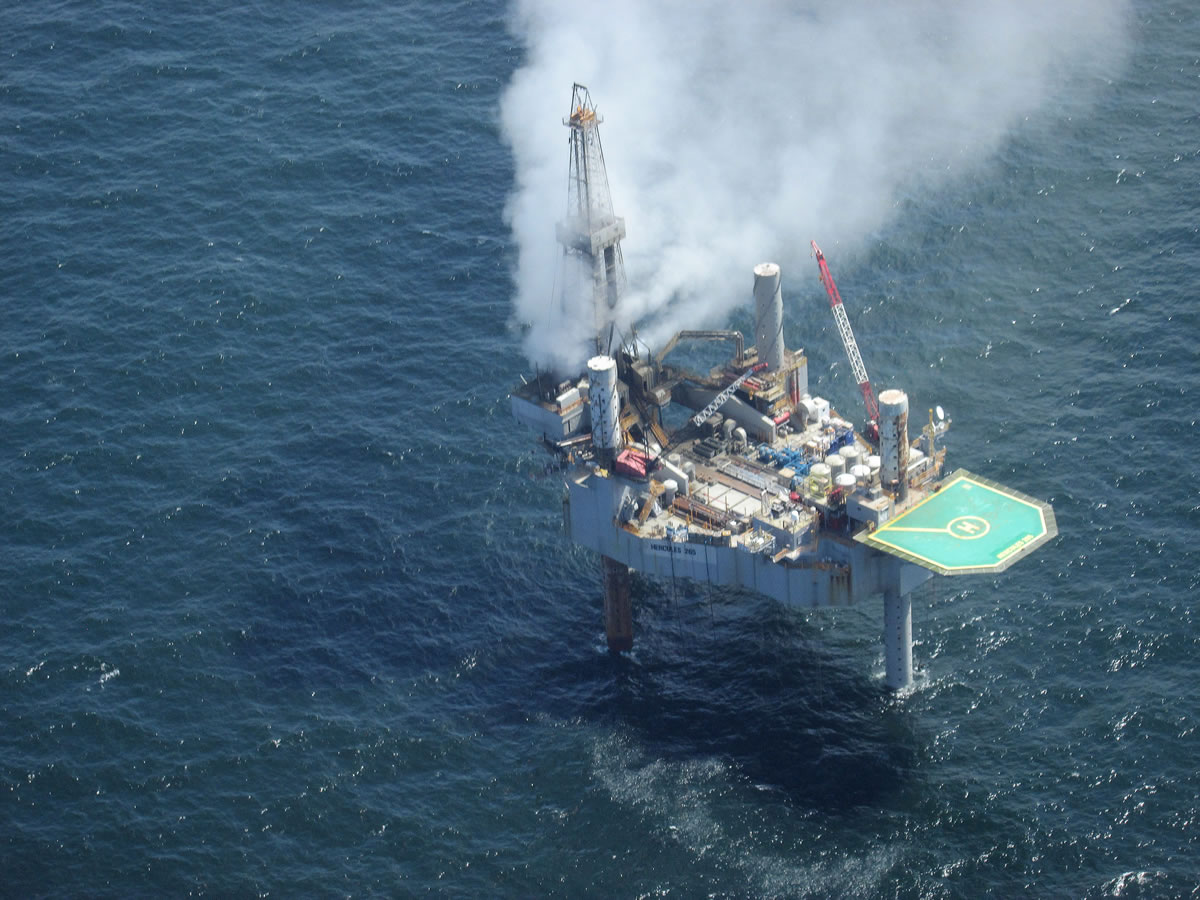NEW ORLEANS — An out-of-control natural gas well burned Wednesday off Louisiana hours after it ignited following a blowout, though authorities said there was no sign of a slick on the surface of the water.
The Bureau of Safety and Environmental Enforcement says it saw no sheens near the well during flyovers Wednesday morning. The lack of sheen indicates the gas is burning off without releasing oil or other hydrocarbons — which are sometimes found in gas wells — into the water.
The fire broke out late Tuesday following a blowout in the morning, authorities said. Forty-four workers were evacuated from the drilling rig, and no injuries were reported.
Officials stressed that the blowout wouldn’t be nearly as damaging as the 2010 BP oil spill. That disaster included an explosion on the Deepwater Horizon drilling that killed 11 workers and the release of millions of gallons of oil into the Gulf of Mexico.
Natural gas generally poses much less of an environmental risk to the Gulf than crude oil, said several scientists contacted about Tuesday’s blowout.
“Gas being discharged now would not necessarily affect the water system of the Gulf proper,” said Donald Boesch, president of the University of Maryland’s Center for Environmental Science and a member of the federal panel that investigated the BP oil spill. That’s because it’s likely most of the gas is venting directly into the atmosphere given the fire and shallow depth of the well, he said.
Also, by nature natural gas — mostly methane — is far more soluble than oil, meaning it more easily dissolves, dilutes and disperses than crude oil, Boesch said. And that means concentrations that are far less lethal to the marine environment, he said.
The federal authorities said in a news release that well owner Walter Oil & Gas was preparing to move equipment to the area in case it needs to drill a relief well. The owner of the blown rig, Hercules Offshore Inc., said the relief well was among options being considered.
Two firefighting vessels had to be moved away to a safe distance from the fire, according to the federal news release. A third was being brought to the area.
The gas blowout was reported Tuesday morning.
The Coast Guard kept nautical traffic out of an area within 500 meters of the site throughout the day. The Federal Aviation Administration restricted aircraft up to 2,000 feet above the area.
On Tuesday before the fire broke out, a light sheen had been spotted by federal inspectors.
Earlier this month, a gas well off the Louisiana coast flowed for several days before being sealed.
Chris Roberts, a member of the Jefferson Parish Council in south Louisiana, said the travel restrictions might pose an inconvenience for participants in an upcoming deep sea fishing tournament.
“It could change some plans as to where some people plan to fish,” he said.
Tuesday’s blowout occurred near an unmanned offshore gas platform that was not currently producing natural gas. The workers were aboard a portable drilling rig known as a jackup rig, owned by Hercules Offshore Inc., which was a contractor for exploration and production company Walter Oil & Gas Corp.
Walter Oil & Gas reported to the BSEE that the rig was completing a “sidetrack well” — a means of re-entering the original well bore, Angelico said.
The purpose of the sidetrack well in this instance was not immediately clear. A spokesman for the corporation did not have the information Tuesday night. Industry websites say sidetrack wells are sometimes drilled to remedy a problem with the existing well bore.
“It’s a way to overcome an engineering problem with the original well,” Ken Medlock, an energy expert at Rice University’s Baker Institute said. “They’re not drilled all the time, but it’s not new.”



